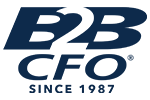
Dashboards
Posted on March 31, 2020 by Terry Eve
What are they and do I really need one?
You are driving down the road behind the wheel of your car. How fast are you going? Do you have enough fuel! Are you headed in the right direction? How is the engine performing? Is the engine’s temperature & oil pressure OK? Are there any warning indicators? In short, how do I know if everything is working as necessary to get me to my destination? Quick answer, you look at your dashboard for these answers and more. Also consider this, can you imagine driving your car without it?
And in business it can be the same tool. A Dashboard for your business will help you identify the key indicators to let you know your business is either on track or that you need to take corrective action. The speed indicator is revenues, your other indicators are key metrics & measures, and your fuel CASH! Typically the update frequency is weekly, but in more sophisticated systems it can be real time.
Each dashboard is designed specifically for the business. Metrics for one business are not the same as another’s and while some elements may be the same, others are significantly different. A professional firm is different from a manufacturer and a retailer with inventory different yet again. So it is critical that the person designing the dashboard and the person using the dashboard agree on the content, how it will be gathered and maintained and ultimately the cost as it should not exceed the benefit. And much like an automobile manufacturer changes the dash periodically in a car to make it better, so should your business dashboard be a living, working tool that is continually improved over time.
Let’s look at some of the more common elements and a few variances for different industries:
Revenues: This measure should generally be as follows, current week, month-to-date, quarter to date, year-to-date compared to the same period’s budget and prior year actual. This is how fast the business was planning to go and whether it is picking up speed or losing pace.
Operational Metrics: These measures can vary greatly by industry. For example in a restaurant the number of covers (people), the average check size, and influencing conditions like weather should be checked daily and charted to display trends. In professional services firms (law firms, engineers etc.) utilization (percent billable to percent available) and realization (percent collected Vs percent earned) are keys to profitability. And in almost all businesses, labor hours, overtime, and head count are key metrics to measure and follow. How about your accounts receivable? What are your days of revenue outstanding at the end of the week, your cumulative ageing, and estimated bad debt and collection problems quantitatively?
Cash: Cash is what fuels or throttles down the growth of business. How much do you have on hand, what is the available amount of credit on your credit facility, how much do you need next week, and is there enough to meet those needs???? Remember this axiom, Never; don’t Ever run out of cash, Never! Cash is a key indicator and while for certain measures weekly are enough frequency, the daily cash balance is something worthy of consideration too. And do you know the bank balance, the book balance or both? Do you know the difference and why that is important?
Interpretation: And that brings us to the final point; can you properly interpret the data? How do you know a long term trend rather than mere weekly aberration? Just like when you learned to drive a car, learning to read and interpret the dashboard is critical to using it successfully. So not only can your CFO help develop and implement the dashboard, they can also help you interpret the information and react appropriately to what lays ahead.
B2B CFO® has approximately 3,000 years of experience to help identify, monitor and solve your business problems. Let us help you keep your business on the road to success!

